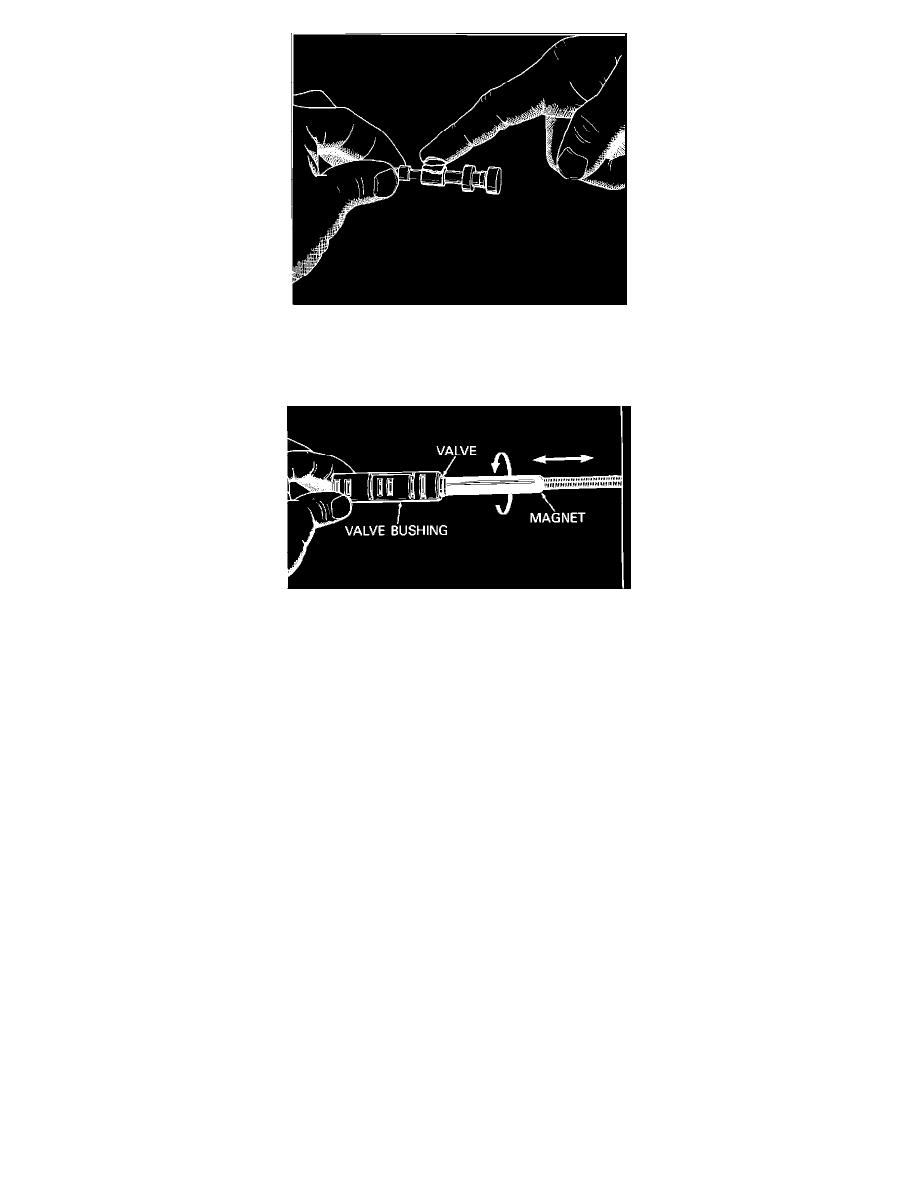Calais FWD V6-181 3.0L (1986)

FIGURE 4
1.
Apply a small amount of "micro fine" lapping compound to the valve lands. (The lapping compound should be 900 grit or finer.) Reinsert the
valve into the bushing (or bore in the valve body). Fig. 4
FIGURE 5
2.
A. Steel Valves
Using a pencil type magnet, rotate the valve while moving it back and forth in the bore. Fig. 5.
B.
Aluminum Valves
Using a small flat blade screwdriver, move the valve back and forth in the bore.
IMPORTANT:
Too much "lapping" of a valve will cause excessive clearances and increase the chance of a valve not operating. Clearances between a
valve and it's sleeve or bore are normally .028 - .04 mm (.001 - .0015").
3.
After lapping a steel valve with a magnet check for magnetism in the valve by holding it near some steel filings or chips. If the valve can pick up
the filings, you must demagnitize it by using a "demagnetizing" tool (different types are available at most tool stores).
4.
Again check the valve for magnetism, and if necessary, demagnetize it following the procedure in step 3. Repeat this procedure until the
magnetism has been removed.
5.
Thoroughly clean the valve and bushing (or bore in the valve body) with solvent and dry using compressed air.
6.
Place the valve in its bushing (or bore in the valve body) and check for freeness of movement by rocking the bushing (or valve body) back and
forth. The valve should travel freely in its bore. If the valve still tends to stick, repeat the lapping procedure.
NOTE:
The use of honing stone fine sandpaper or crocus cloth is not recommended for servicing stuck valves. All valve lands have sharply machined
corners that are necessary for "cleaning" the bore. If these corners are rounded, foreign material could wedge between the valve and bore
causing the valve to stick.
Reassembly
1.
Make sure the valve body casting, valves and bushings are completely dry and free of cleaning solvent.
2.
Lubricate all springs, valves and bushings with clean transmission fluid.
